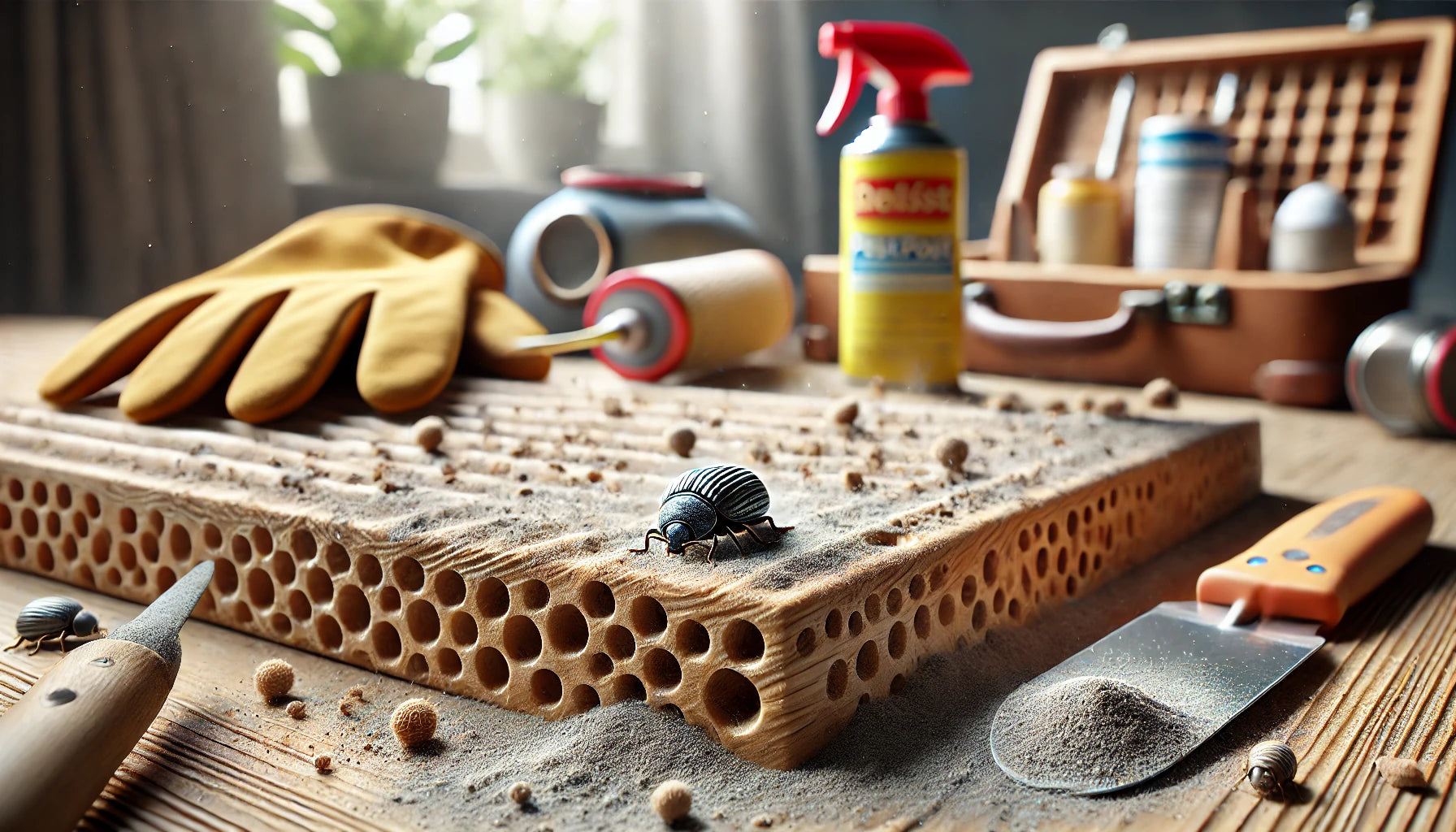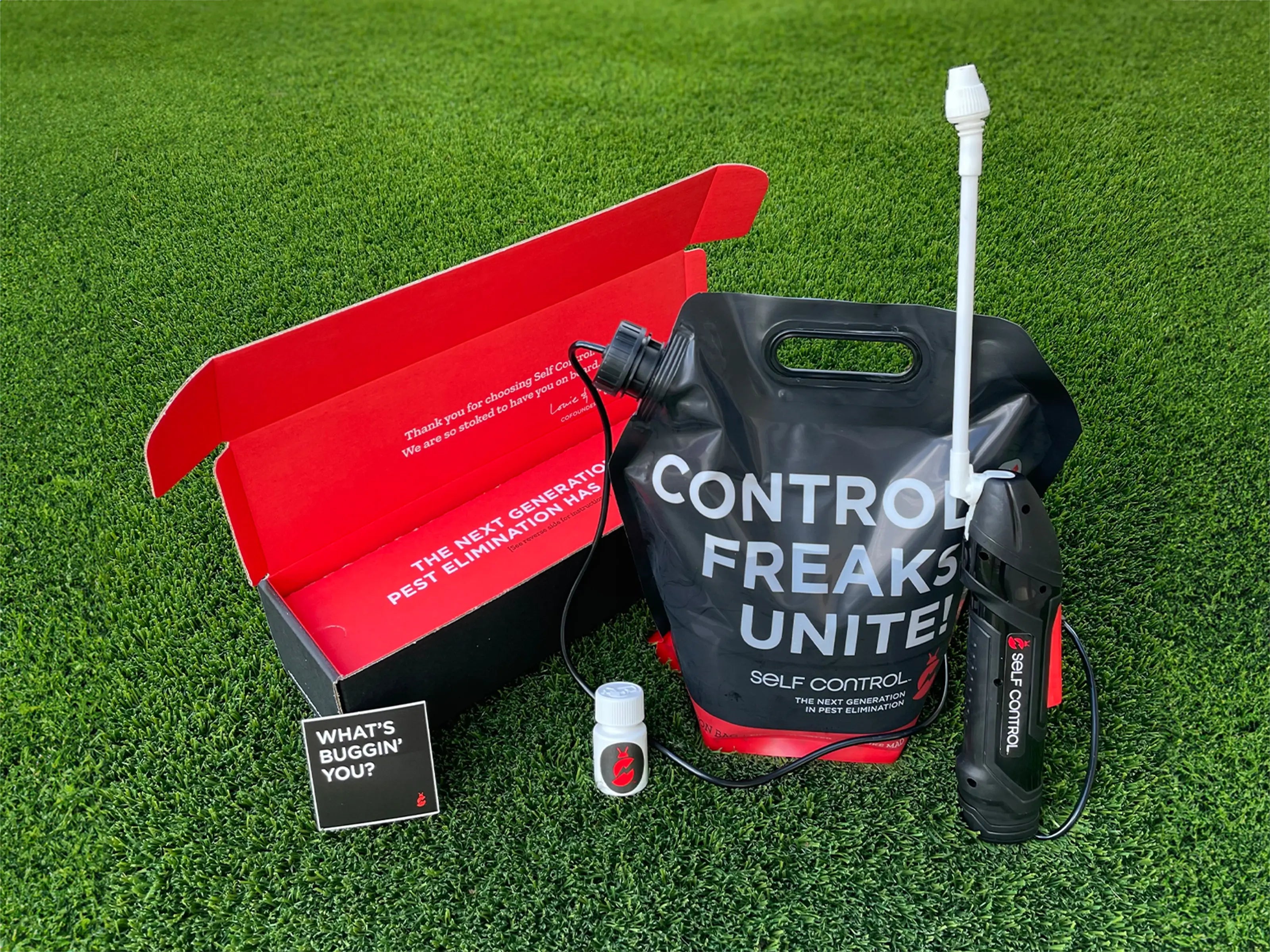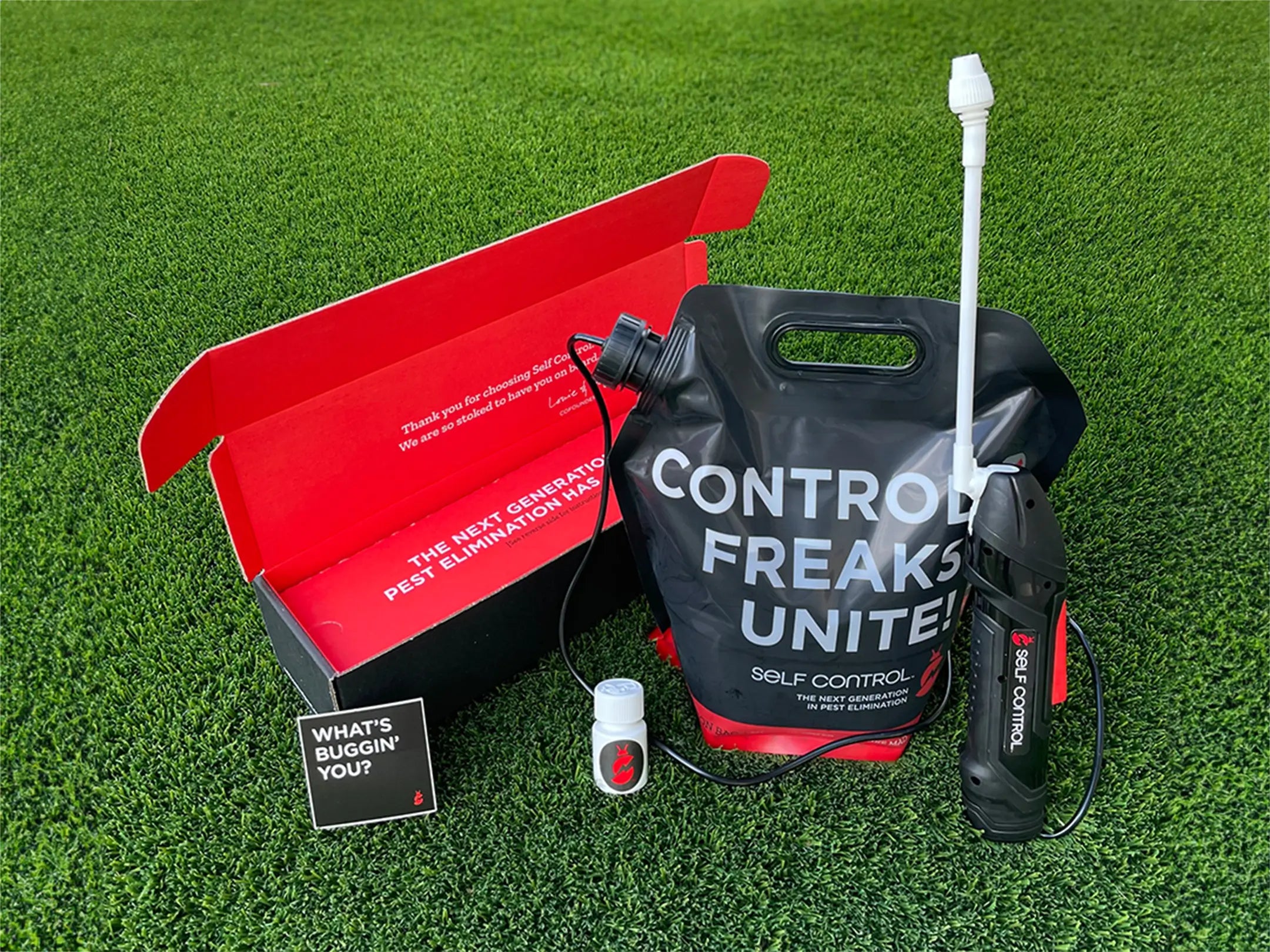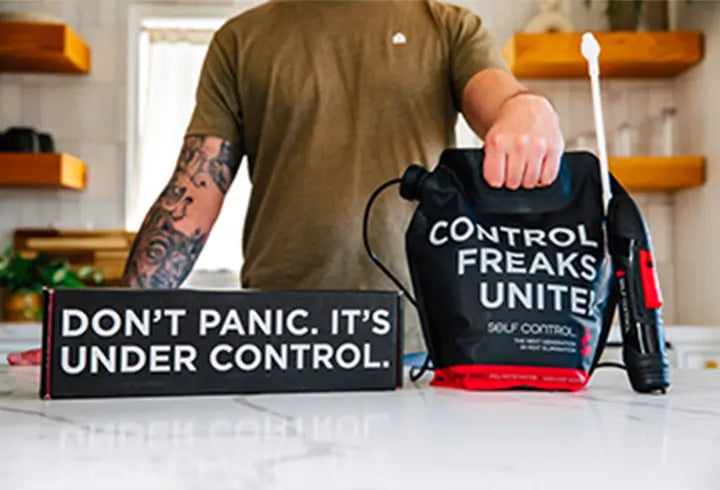
Powderpost beetles are small but destructive insects that can cause significant damage to wooden structures and furniture. These beetles, particularly those in the Lyctinae family, bore into wood and lay eggs inside it. When the larvae hatch, they feed on the wood, tunneling through it and creating fine, powdery dust, hence the name "powderpost beetle." If left untreated, they can compromise the structural integrity of your home, wooden furniture, and other wood-based belongings.
To effectively manage a powderpost beetle infestation, it's essential to explore the right treatment options. In this blog, we'll walk through various powderpost beetle treatments, from DIY solutions to professional options, and discuss how Self Control Pest's DIY Pest Control Kit can help you protect your home.
Identifying a Powderpost Beetle Infestation
Before diving into treatment options, it's important to know the signs of a powderpost beetle infestation. These beetles can remain undetected for months or even years, as they spend most of their life cycle hidden inside wood. Here are some common signs to look out for:
- Powdery Dust (Frass): The most obvious sign is the presence of a fine, powder-like dust near holes in wooden surfaces. This dust is created when larvae eat through the wood.
- Exit Holes: Small, round holes on the surface of wood indicate that adult beetles have emerged from their larvae stage. These holes typically range from 1/32 to 1/16 inches in diameter.
- Weak or Damaged Wood: Infested wood may sound hollow or crumble easily when tapped or prodded.
- Visible Beetles: While adult powderpost beetles are less commonly seen, you may spot them near the infested wood, particularly at night as they are attracted to light.
If you notice these signs, it's time to take action.
Treatment Options for Powderpost Beetles
1. Surface Treatments
For minor infestations, surface treatments are an effective way to kill powderpost beetles in their adult or larval stages. These treatments usually involve applying insecticides directly to the wood's surface. The goal is to allow the insecticide to penetrate the wood and kill the larvae inside.
Some common surface treatments include:
- Boron-Based Products: Borate-based products are highly effective for treating powderpost beetles. These chemicals penetrate the wood and kill the larvae when they feed. The best part? Borates are low-toxicity compounds, making them safer for pets and children when used properly.
- Insecticidal Sprays: Insecticides containing pyrethrins or permethrins can also be applied to infested wood to kill powderpost beetles. However, these are generally more effective on the beetles’ surface rather than deep inside the wood.
2. Wood Replacement
If the infestation is localized and the wood has been extensively damaged, replacing the affected wood may be the best option. This is a straightforward but more costly approach, especially if structural components of the home are involved.
- Partial Replacement: You can remove only the damaged sections of wood, replacing them with new, treated wood that is resistant to future infestations.
- Full Replacement: If an entire wooden structure, such as a beam or floorboard, is compromised, it might be necessary to replace the whole piece to ensure safety and long-term protection.
3. Fumigation
For larger or more severe infestations, fumigation is often the most effective treatment. Fumigation involves enclosing the entire infested structure or piece of furniture and filling it with gas to kill powderpost beetles at all life stages, including eggs, larvae, and adults.
- Professional Fumigation: This process requires professional expertise. A licensed pest control company will tent the structure and release a gas, typically sulfuryl fluoride, into the enclosed space. Fumigation is highly effective but can be costly and disruptive, as you’ll need to vacate the property during treatment.
4. Heat Treatment
Heat treatment is another option for severe infestations, particularly in furniture or small structures. Heat treatments kill beetles by raising the temperature of the wood to levels that are lethal to the insects.
- Portable Heating Chambers: For small objects, you can use a portable heating chamber to raise the temperature to about 120°F (49°C) and hold it for 24-48 hours. This will kill all life stages of the beetle.
- Whole-House Heat Treatment: If the infestation has spread throughout your home, some pest control companies offer whole-house heat treatments. This method involves raising the temperature of your home to a level that will kill powderpost beetles without damaging the structure or its contents.
DIY Treatment with Self Control Pest’s DIY Pest Control Kit
If you're looking for a more affordable and convenient solution, Self Control Pest’s DIY Pest Control Kit is a fantastic option for handling powderpost beetles and other wood-boring pests. While severe infestations might require professional intervention, this DIY kit is perfect for preventing and managing mild to moderate infestations.
Features of the DIY Kit
- Commercial-Grade Pesticide: The DIY Pest Control Kit includes a powerful, commercial-grade pesticide designed to eliminate a wide range of pests, including powderpost beetles. The formula is comparable to what professional pest control services use, but at a fraction of the cost.
- Pet-Safe Formula: The pesticide is formulated to be safe for use around pets and children when applied correctly. As with all pesticides, be sure to follow the provided safety instructions to keep your family and pets safe.
- Easy Application: The kit comes with a battery-powered spray wand and mixing bag, making it simple to apply the product to infested wood. Just mix the concentrate with water, attach the applicator, and spray the affected areas.
- Long-Lasting Protection: Once applied, the treatment provides protection for up to three months, giving you peace of mind that powderpost beetles won’t return.
Preventing Future Infestations
Treating powderpost beetles is only half the battle. Preventing future infestations is equally important. Here are some preventive measures to consider:
- Moisture Control: Powderpost beetles are attracted to wood with high moisture content. Keep your home well-ventilated and use dehumidifiers in damp areas to reduce moisture levels.
- Wood Treatment: Apply borate-based wood treatments to unfinished wood surfaces in your home. This will help deter powderpost beetles from infesting the wood in the first place.
- Inspect Wood Before Use: Whether you’re building a new home, renovating, or buying wooden furniture, always inspect the wood for signs of infestation. Look for tiny exit holes or fine powder around the wood, indicating a potential beetle presence.
Dealing with powderpost beetles can be a daunting task, but with the right approach, you can protect your home from extensive damage. Whether you opt for surface treatments, wood replacement, or more aggressive methods like fumigation or heat treatments, there are solutions available for every level of infestation.
For those seeking a cost-effective and convenient option, Self Control Pest’s DIY Pest Control Kit offers a reliable solution that’s safe for pets and easy to use. With commercial-grade effectiveness and long-lasting protection, it’s an excellent choice for DIY pest control enthusiasts looking to take matters into their own hands.
By combining treatment options with preventive measures, you can safeguard your home and wood furniture from future powderpost beetle damage.



Comments (0)
Back to Critter Chronicles